Excessive mold growth brings more problems to your properties than ruined aesthetic. Failing in mold remediation efforts can result in exposure, health risks, and decreased property values due to the large growth of mold. If you find a large amount of mold growing on your properties, don’t panic. Here are the basic guidelines you should follow to start remediation stages.
What is Mold Remediation?
Mold is a term for the mass growth of single-celled fungi, and its presence is prevalent in our lives, including on properties. If mold grows excessively and covers various parts of your building, various risks can befall both the constructions and occupants. Remediation means stopping the growths of the fungi, which also include removing the potential environments for these growths to happen.
Homeowners often solve their mold problems using household products or natural remedies. However, large growths require professional services, especially since mold can grow in places you cannot see.
Why Mold Remediation is Important
Exposure risk is the main reason for remediation process. Mold releases spores that fly and stick everywhere, which are dangerous for people with asthma or allergy. Spores can also fly to eyes, causing redness, itchiness, and teary eyes. If the building’s occupants have poor health or immune system, constant spore exposure will worsen their conditions.
Mold also causes unpleasant signs in a house, such as bad smell and disgusting spots on the floor, walls, windows sills, or ceilings. Large growth can release musty smell and even slightly-irritating spore clouds. Depending on the growth habitat, mold can weaken a building’s structural integrity and damage various parts, reducing the property value.
Causes of Mold Growth
Mold loves growing on dark, damp, poorly ventilated, and rarely exposed spots in any buildings. Mold’s favorite spots are bathrooms, the area under the sink, laundry rooms, toilets, storage spaces, basements, ceilings and ceiling lofts, gutters, pipes, and roofs. Mold can also appear in areas such as window sills and lines between the tiles.
Mold often grows on soft, porous surfaces, such as wood, fabric, fiber, or paper. However, if the condition is ideal (dark, damp, poorly ventilated), mold can grow in abundance on cement, brick, and concrete. Mold can also grow on hidden areas, such as inside the walls. It usually happens because of undetected moisture, such as a leak from plumbing problems.
Mold can also grow on the base of the house if moisture pools under construction. This can happen if the landscaping or gutter system directs water right under the house. If spores are flying from outside and landed inside the house (or being carried by the pets or occupants), ideal conditions will quickly make them grow.
Mold Removal VS Remediation
Some service providers may insist that “mold removal” is different from “mold remediation.” While both have the same goals, the word “remediation” refers to additional strategies to ensure that the mold does not grow back (unlike “removal,” which just means getting rid of the mold). However, services that offer mold remediation also include removal, so there is no exact difference.
When to Call Mold Remediation Experts
Measuring the size of the growth is important to determine the mold remediation strategy. Depending on the level of the growth, homeowners may remove mold using certain household products, without calling experts. Mold growth that exceeds 10 square feet is considered too large for regular homeowners to handle, and it must be treated as a potential hazard.
Sometimes, homeowners do not immediately notice mold growth. You need to consider checking the house for mold if you see these signs:
- Musty odor from places that are usually dark or damp, such as bathroom or basement
- Dark, greenish, or brownish spots on surfaces such as tiles, walls, and wood panels (usually hard to scrub out).
- The sudden rash of symptoms such as eye irritations, watery eyes, and sneezing. People with asthma or allergy may find their symptoms triggered easily, especially during spring and summer
- The house is old and not renovated completely
- There are possible plumbing problems that you neglect
Another good sign to call the expert is if the affected building is a public or commercial one, such as school, office, or clinic. Various states in the US have mold-related laws for buildings, and not cleaning them from mild violates the legal standards for building management.
Mold Remediation Cost
Several factors affect remediation costs, and pricing standards may be different between companies. A cheap remediation job may range from USD400 to USD600, but a full cleaning task (which prevents the return of the mold) costs around USD1,200 to USD3,400. If the standard costs of all states are considered, the average cost across the United States is around US$2,300.
There are times when mold infestation requires more serious efforts. It may cover extensive areas (including hidden spots). The mold may also be from toxic type, which requires special methods to be finished. In this case, a homeowner or building manager may need to spend USD5,000 to USD6,000 for extensive cleaning.
For more information about costs, make sure to shop around and consult with the representative of each company before choosing one.
How to Find Good Remediation Service
Many companies offer high-quality services to get rid of mold, but not all offering the same quality. Your goal is to find one that not only cleans mold (including mold that grows on hidden parts) but also prevents it from growing back. You must find companies that yield official certifications for mold remediation.
If you live in the US, you can check if the company has one or several of these certificates:
-
OSHA
OSHA certification is mandatory for all contractors and building-related services. In the case of mold remediation, OSHA certification ensures that the company understands the formal standard practice to remove mold from a property.
-
CMRS
Certified Microbial Remediation Supervisor (CMRS) is a certificate released by The American Council for Accredited Certification. CMRS is given to a mold remediation supervisor with at least eight years of experience.
-
MICRO
MICRO certification is offered to New York-based mold remediation service by The Mold Inspection Consulting and Remediation Organization. The certification status is acknowledged by New York City Department of Health, The Environmental Protection Agency (EPA), and IICRC S520 mold remediation standard.
-
IICRC
The Institute of Inspection, Cleaning, and Restoration Certification sets up a standard for international mold remediation and cleaning services, and list companies or business owners that fulfill the standard as recommendations. To get the certification, the business owners must join IICRC-approved courses and fulfill various requirements.
-
AIHA
AIHA certification is offered by The American Industrial Hygiene Association. The certification focuses on remediation companies that do their projects in commercial buildings. AIHA certification is also given to mold removal consultant.
-
CMA
CMA (Certified Mold Accessor) is a license offers by The National Organization of Remediators and Mold Inspectors. The license is offered on a state-by-state basis, perfect for local businesses. The mold remediators and inspectors must join NORMI-approved courses to get CMA license.
Some mold remediation businesses may be owned by people who got formal educations or certification courses at universities. If you find out that a company has this kind of certification, verify with the university to find out about the quality of its mold remediation course program.
Mold Remediation Process
If you want to remove the mold yourself, there are several required steps to make sure that the mold will not come back. They are:
-
Protect yourself
Cleaning mold will get you exposed to flying spores and fumes. Make sure to wear work goggles, proper mask, disposable gloves that cover your lower arms, old clothes, and work boots. All of them must be put in covered bags and disposed to prevent the return of the mold. Make sure to open ventilation sources before cleaning a particularly small area.
-
Prevent flying spores from contaminating other areas
Flying spores can easily stick on any surfaces and grow wildly. If the affected area is quite large, create dust barriers using plastic and duct tape. Duct your air movers and vent it directly to the air, away from the moldy room. Duct barrier is available at various online stores.
-
Remove moldy objects
You can clean hard surfaces that are not too contaminated, such as the drywall, hard furniture, floor, and bathroom/kitchen appliances. Mix water with mild detergent or baking soda and scrub the surface to remove the mold. Let it dry naturally before repeating the process.
Some moldy objects need to be completely discarded to prevent contamination. Foods, paper, curtains, books, or several tiles may need to be removed. Put them in a plastic bag and seal the opening well to be discarded.
-
Disinfect the room
Disinfecting the room is important to kill off the possible remaining spores. Use a three-percent hydrogen peroxide solution to spray and scrub the areas you previously cleaned from the mold. If you are afraid of accidentally bleaching the material surface, use commercial mold removers available at many stores.
-
Check and clean the window sills
If there is mold on dry windows sills, you can scrub them down with a mixture of water and disinfectant and follow with a small vacuum that has HEPA filter. If the window sills are wet, just use the disinfectant mixture, and let the surface dry naturally with the help of a mild fan. The same steps apply for door sills and knobs.
If there is mold growing beneath the sills, you need to remove and replace them completely.
Once you clean the room, make sure to create good ventilation and natural light source. Install dehumidifier if necessary to create a hostile environment for mold spores.
Mold Prevention after Water Damage
Water damage can cause an ideal environment for mold, even after the water dries. If the moisture seeps into deeper layers of the material, it can cause mold growth in the future. Here are several steps to do it:
- Make sure to remove all the water damages from the premise. Foods, tiles, upholstery, insulation surfaces, paper, and non-essential objects that get moldy must be removed and discarded. Wipe hard, nonporous surfaces with a mixture of water and mild detergent. Scrub the surface and let it dry.
- Use dehumidifier and fan to dry porous hard surface, such as wood (use the mild setting for the fan). Once the surface dried, apply the water-detergent mixture to the surface, and scrub lightly. Let it dry again.
- Use a dehumidifier, fan, and even a little heat to dry upholstered surface, such as sofa, armchairs, and pillows. Curtains and carpets may have their own recommended cleaning methods, especially if they are made of specific materials. See the labels or just bring them to curtain and carpet cleaning services.
- Discard ceiling tiles and insulation layers, regardless of materials. Since they provide barriers from natural elements and temperature, you should start fresh with the new ones.
- Make sure that the hidden areas, such as behind the walls or under the floor, are dry. These areas are difficult to reach, and mold may grow from hidden water damage. If you are unsure, call professional water damage remediation to handle the difficult spots.
By preventing water damage to spread, you can reduce the risk of mold growth, and cut down the future mold remediation costs (if it is still necessary).
Conclusion
Ideal mold remediation service should not only remove the mold but also prevent it from coming back. Large infestation, especially in old, commercial, or public buildings require professional services. Make sure to choose companies that have official certifications in mold remediation.
Self-remediation is possible if the mold infestation is small and manageable, ideally under 10 square feet. Products such as detergent, hydrogen peroxide, dehumidifier, disposable protective equipment, and commercial mold remediation products are important to do the job. Make sure to add proper ventilation and natural light source to stop the mold from coming back.
Water damage, moisture, heat, and poor ventilation will create ideal habitats for mold. Removing damaged objects and drying the surface quickly is important to reduce the risk of mold growth. Prevention is the best way to reduce infestation and future mold remediation costs.
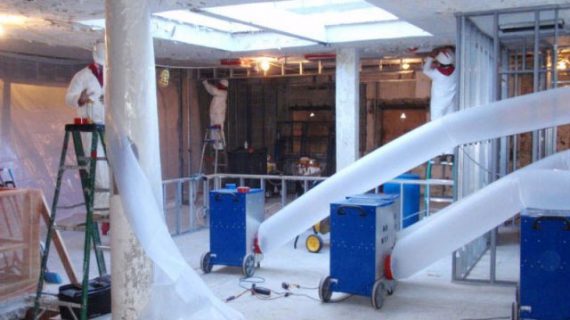
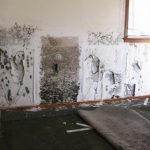
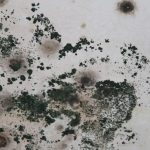

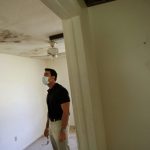
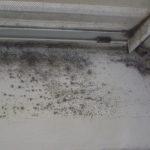

This article was very informative. I moved into this apt. 12/20/18, but the lease expires 1/20/19. I have been very sick since moving in and have been to many doctors with NO diagnosis for my sympotoms. Finally, I had Fla Power & Light inspect the a/c unit, and they put in their report the a/c unit needed to be replaced. The outside living room window was covered w/green mildew, from base of ground right up to window sill. I asked mgmt. here if they ever pressure clean the OUTSIDE windows. I was told by Denise Vanas”their supposed to.” Well, the showed up last Monday and pressure cleaned the living rm window w/4 gallon bottles of bleach. The a/c unit and handler was replaced this past Tues. I took pictures, because after the bad unit was removed the back wall was covered from ceiling to floor w/black mold/mildew. I also too photos of the black mold debris removed from this apt. I need to get OUT of this lease and move to a healthy air breathing environment. I want to take Legal Action but don,t know where to begin. The mgmt NEVER responds to my calls nor personal visits to the office and speak to mgr MARIA SU of Park Place at Turtle RUN, Coral Springs Fl 33067. my apt is 3622 Terrapin Ln apt1008 bldg 10.